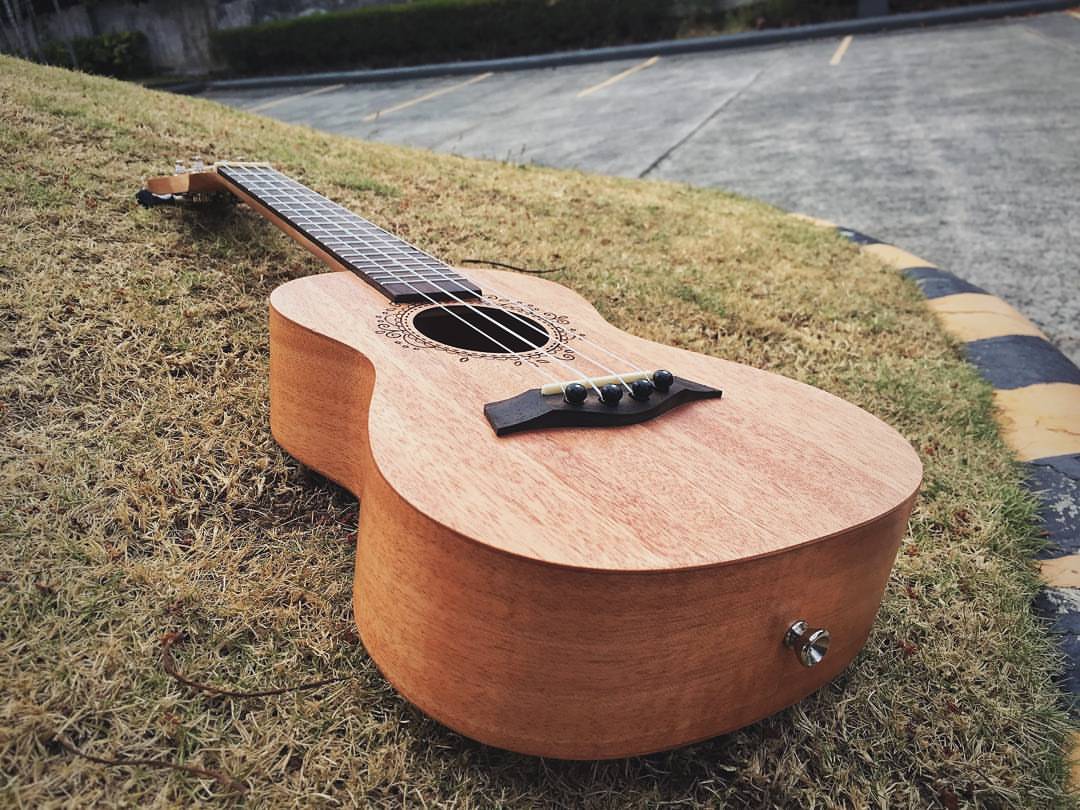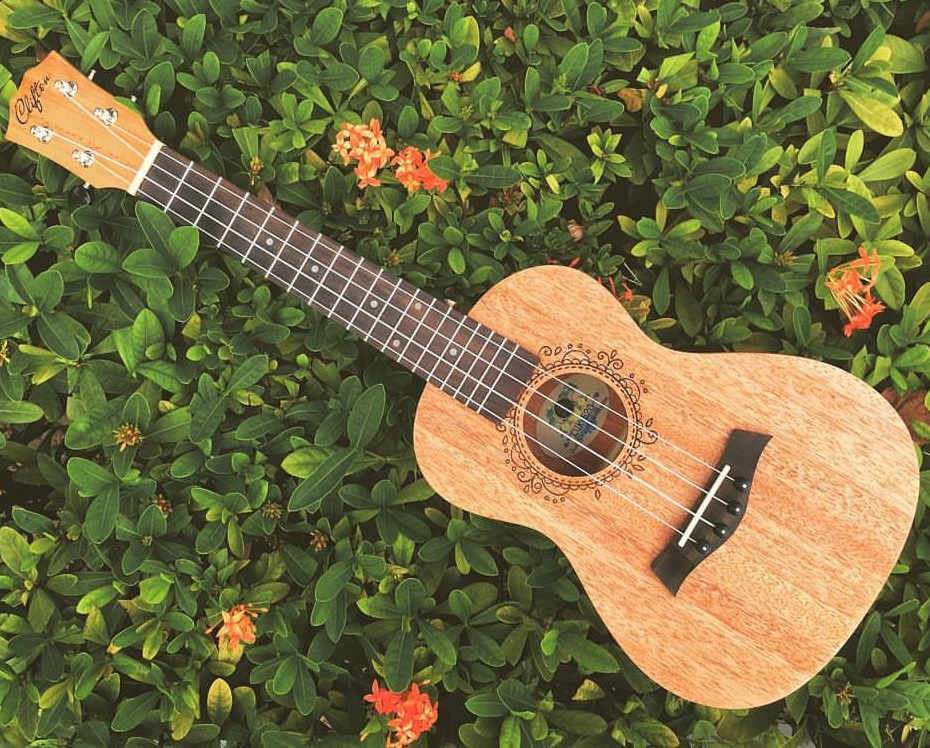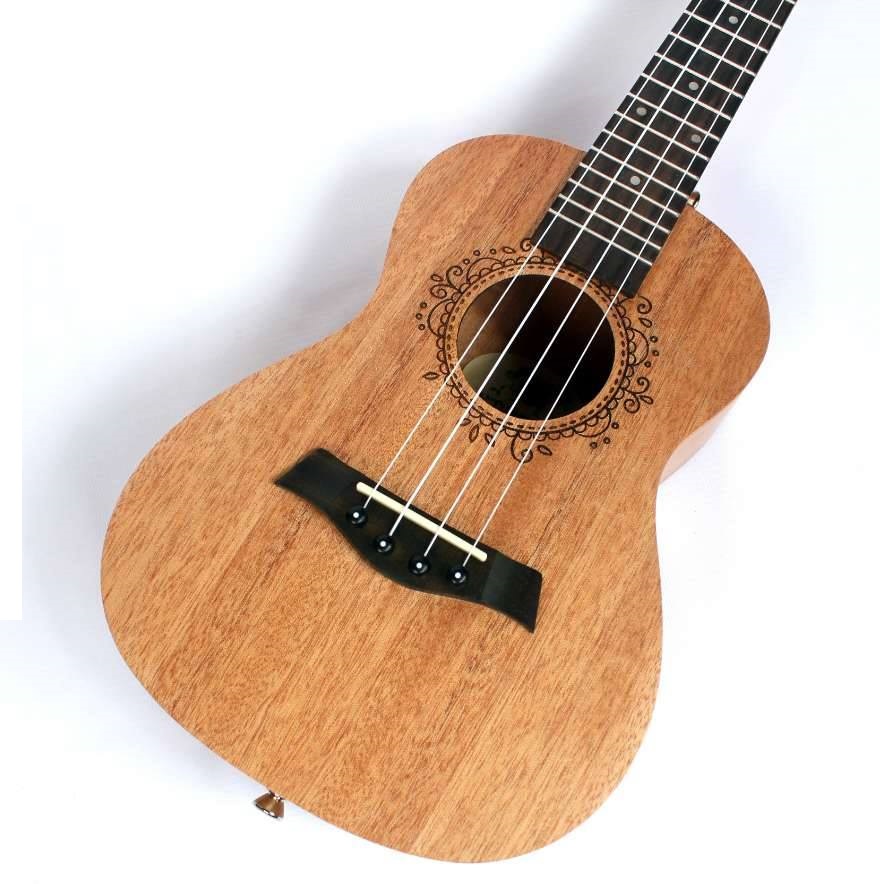Cuk
Plucked Instruments
Europe
Between 1001 and 1900 AD
Video
The cuk, a stringed instrument with a rich and varied history, occupies a unique space within the musical traditions of the Balkans and beyond. While its presence may not be as globally recognized as some of its more prominent stringed brethren, the cuk’s distinctive sound and cultural significance warrant a closer examination.
Description and Type of Instrument
The cuk, fundamentally, is a plucked stringed instrument, belonging to the lute family. It typically features a relatively small body, a fretted neck, and a varying number of strings. In most common formats, the cuk’s appearance would often be refered as a smaller type of guitar. It’s sound is quite bright, and it’s use is mostly in folk musical styles. The strings, generally made of nylon or, in older iterations, gut, are plucked with the fingers or a plectrum, producing a sound that can range from delicate and melodic to robust and rhythmic. Due to its smaller size, it lends itself well to folk musics that move, like dances, or small musical ensembles. It is usually a chordal instrument, playing harmonies behind a main melody, but can play lead lines as well. The Cuk’s body varies from flat back designs, to slightly round back designs depending on its specific regional construction.
Historical Background
The cuk’s historical journey is intricately linked to the broader dissemination of stringed instruments across Europe, with roots that stretch back to the influences of the Mediterranean and Eastern European traditions. The cuk, as it’s generally understood today, has a strong presence in the musical landscapes of the Balkan region. Specifically it is known to be used extensively in the musical traditions of regions that belonged to the former yugoslavia, and the surrounding areas. Understanding the cuk’s history requires acknowledgement of the influences from other related instruments. It is generally understood to have developed, through the ages, from older types of stringed instuments. The Cuk’s path is entangled with that of other small plucked instruments that travelled throughout the region.
Tracing the cuk’s precise origins is a complex undertaking, as musical traditions often evolve and merge over time. However, it’s generally accepted that the cuk’s development was shaped by the exchange of musical ideas and instruments between various cultures. The timeline becomes hard to pin down to a certain century, as the older versions morphed over time into the contemporary versions. The use of older related instruments stretch back many centuries, but the cuk in its recognizable form is more commonly associated with the late 19th and 20th centuries, as musical production began to standardize. It is here that it took its most prevalent form. The expansion of folk musical recordings helped to further spread the instruments use, and standardize its building practices. Therefore the instrument is tied heavily to the folk revival periods of the 20th century.
Construction and Design
The construction and design of the cuk reflect a blend of traditional craftsmanship and regional variations. The body, typically made of wood such as spruce, maple, or walnut, serves as the resonating chamber. The neck, also crafted from hardwood, is fitted with frets, which divide the fingerboard into specific intervals, enabling the player to produce distinct pitches. The bridge, located on the body’s soundboard, supports the strings and transmits their vibrations to the body. The number of strings on a cuk can vary, but configurations with three to six strings are common. The strings can be arranged in single courses or in doubled courses, known as courses. The headstock, situated at the top of the neck, houses the tuning pegs, which allow the player to adjust the tension of the strings and achieve the desired pitch. The body’s shape and size can also vary, depending on the region and the specific type of cuk. Some cuk instruments feature a rounded back, while others have a flat back. These differences in design can affect the instrument’s tonal characteristics and overall sound.
The wood type choices effect sound greatly. Fir, for example, is light and resonant, which lends itself to a brighter tone. Maple, being more dense, gives a more clear tone. The craft of the luthiers that build these instruments has been past down through generations. Due to the cuk being primarily a folk instrument, many were traditionally built by small luthier shops, or individual craftsman, in the area where they were used. This means that there is a range of build quality, and small changes in design from builder to builder. In recent times, better access to manufacturing, and standardized parts has meant the building of these instruments is more uniform. But the traditional, handmade cuk, is still produced.
Its Types
While the fundamental characteristics of the cuk remain consistent, regional variations and stylistic adaptations have led to the development of different types of cuk. These variations often reflect the unique musical traditions and preferences of specific communities.
The Balkan Cuk: This is perhaps the most widely recognized type of cuk, characterized by its presence in the folk music of the Balkan region. It often features a relatively small body, and its used extensively in folk dance music.
Regional Variations: Within the Balkan region, local preferences have led to subtle variations in the cuk’s design and construction. These variations may include differences in the body’s shape, the number of strings, or the tuning of the instrument. Each variation is related to the specific style of music of that specific area.
Modern Adaptations: In contemporary music, the cuk has occasionally been adapted for use in genres beyond traditional folk music. These adaptations may involve modifications to the instrument’s design or the use of electronic amplification.
These modern adaptations are not as common, but show that the cuk is capable of a wider musical roll.
It must be stated, that because the cuk is a folk instrument, that the regional variances, often blur into eachother. Many times, the players of the instrument will use whatever version they can acquire, and the types become less strictly defined.
Characteristics
The cuk possesses a number of distinctive characteristics that contribute to its unique sound and musical role.
Bright and Clear Tone: The cuk’s relatively small body and nylon strings contribute to its bright and clear tonal quality. This characteristic makes it well-suited for melodic passages and rhythmic accompaniment. The cuk sounds much higher pitched then a standard acoustic guitar.
Rhythmic Versatility: The cuk’s plucked string technique allows for a wide range of rhythmic possibilities. It can be used to produce intricate rhythmic patterns, making it ideal for dance music and other rhythmic styles.
Melodic Expressiveness: Despite its rhythmic capabilities, the cuk is also capable of producing expressive melodies. Its relatively short scale length and fretted fingerboard enable the player to navigate melodic passages with precision.
Chordal Accompaniment: the Cuk, like many folk stringed instruments, excells at chordal accompaniment. It is used to fill in harmonic spaces, and build the foundation of the music. In many folk contexts, it is the rhythmic and harmonic base of the musical group.
Portability: The cuk’s compact size and lightweight construction make it a highly portable instrument. This characteristic has contributed to its popularity among folk musicians, who often perform in various settings. This portability, is a main characteristic of its use in folk music.
Folk Music Association: The cuk is heavily associated with folk music traditions. In the regions it comes from, the sound of the cuk is heavily connected with the sounds of traditional celebrations, and folk dancing.
Simplicity and Accessibility: Compared to more complex stringed instruments, the cuk is relatively simple to learn and play. This accessibility has contributed to its popularity among amateur musicians and folk music enthusiasts.
Varied Tuning: The tuning of the cuk can vary, allowing for different tonal colors and musical possibilities. This adaptability has contributed to its use in a variety of musical contexts. The tunings can also change from region to region, and player to player.
Playing Techniques and Sound Modifications
The Cuk, a stringed instrument originating from Indonesia, primarily used in Keroncong music, possesses distinct playing techniques. Its role is often rhythmic, providing a steady, percussive foundation. Players typically employ strumming patterns, often with a rapid, light touch, that complements the melodic lines of other instruments within the ensemble. Variations in strumming speed and intensity allow for dynamic expression. Furthermore, the Cuk’s relatively short scale and nylon strings contribute to its characteristic bright, clear tone. Sound modifications are generally achieved through variations in playing technique rather than the use of effects pedals. Muting the strings with the palm of the hand can create a percussive, staccato effect, while varying the strumming position along the strings alters the tonal color. The use of different finger positions on the strings also allows for the playing of different chords, and rhythmic variations. Because the instrument is an acoustic instrument, the dynamic variation comes from the players touch.
Applications in Music
The Cuk’s primary application lies within Keroncong music, a traditional Indonesian genre that blends indigenous melodies with Portuguese-influenced harmonies. In Keroncong ensembles, the Cuk, alongside the Cak (another related instrument), provides the rhythmic backbone, creating a distinctive rhythmic texture. Its role is crucial in defining the genre’s characteristic sound. Beyond Keroncong, the Cuk’s versatile nature has led to its occasional use in other musical contexts. Some contemporary Indonesian musicians have experimented with incorporating the Cuk into fusion genres, blending traditional sounds with modern influences. This allows the instrument to have continued relevance in the ever evolving music landscape.
Most Influential Players
Identifying specific “most influential” Cuk players can be challenging, as much of the instrument’s tradition is embedded within the broader context of Keroncong ensembles. However, the legacy of Keroncong itself is carried by many talented musicians that have mastered the Cuk, and other instruments in the Keroncong style. The players that have maintained and passed down the traditional playing styles are the most influential. In the world of Keroncong, the focus is often placed on the ensemble, rather than the individual player. Therefore, many players that have contributed to the evolution of the genre, have also contributed to the evolution of the Cuk playing style. It is more accurate to say that the most influential figures are the masters of the Keroncong style, who have preserved and propagated the Cuk’s role within it.
Maintenance and Care
Maintaining the Cuk involves basic care similar to other stringed instruments. Regular cleaning with a soft cloth helps prevent the buildup of dust and grime. Given Indonesia’s tropical climate, humidity control is essential to prevent warping or damage to the wooden body. When not in use, storing the Cuk in a case can protect it from environmental factors. String replacement is also a necessary part of maintenance. Nylon strings, while durable, will eventually wear out and lose their tonal quality. Regular checks of the tuning pegs and bridge are also recommended to ensure stability and proper intonation. Because the instrument is often made of wood, changes in temperature and humidity can greatly effect the instruments sound, and playability.
Cultural Significance
The Cuk holds significant cultural value within Indonesian musical traditions, particularly in the context of Keroncong. It represents a fusion of cultural influences, reflecting Indonesia’s historical interactions with other nations. Keroncong, and thus the Cuk, is often associated with a sense of nostalgia and tradition, evoking images of past eras. The instrument’s presence in Keroncong ensembles underscores the importance of communal music-making and the preservation of cultural heritage. The Cuk, along with the Cak, provides a unique rhythmic and harmonic texture that is essential to Keroncong music. In the cultural landscape of Indonesian music, the Cuk stands as a testament to the enduring power of musical tradition.
FAQ
What is the origin and history of the Cuk musical instrument?
The Cuk is a traditional plucked string instrument from Indonesia, commonly used in Kroncong music. It has historical roots in Portuguese instruments like the cavaquinho. Introduced during colonial times, it became integral to Indonesian folk music. Over time, it evolved in design and playing technique.
What materials are used in the construction of the Cuk?
The Cuk is typically made from wood, with a hollow body to amplify sound. The neck is crafted from durable hardwood, while the strings are usually nylon or gut. Its frets are often made of metal, aiding in tonal accuracy. The instrument’s lightweight design makes it easy to handle.
What are the main uses and applications of the Cuk?
The Cuk is mainly used in Kroncong ensembles, providing rhythmic accompaniment. It plays a vital role in traditional and contemporary Indonesian music. Often paired with the Cak, it enhances harmonic textures. The instrument is also used in cultural performances and folk celebrations.
 Links
Links
References
Other Instrument
Categories




















